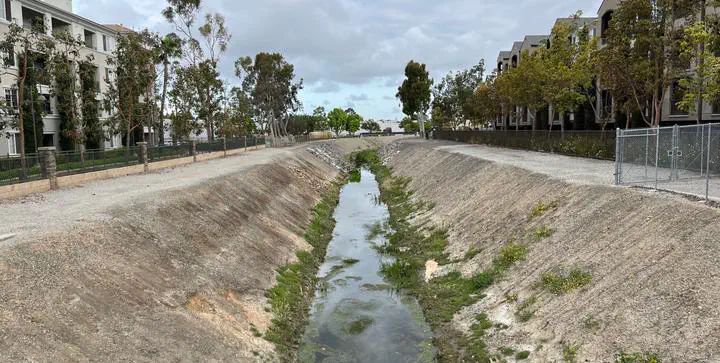Research Themes
 Photo by Erik Porse
Photo by Erik PorseUrban Water Management Studies on urban water supply and demand management. In Los Angeles, as part of a set of projects focused on the future of water management in Southern California, we developed a model (Artes) to support systems analysis the Los Angeles County water management network, including water supply, stormwater, water treatment and reuse, and governance, which tested the opportunities for local water supplies in metropolitan LA. The work led to statewide studies of benefits and costs associated with water use efficiency and conservation potential in urban areas.
Stormwater Management Research on stormwater management, financing, and climate change adaptation. Urban stormwater infrastructure traditionally promoted conveyance. In the coming era of stormwater management, however, new technologies and governance structures are increasingly important. Cities are increasingly designing stormwater infrastructure that integrates both conveyance and infiltration in hybrid systems to achieve public health, safety, environmental, and social goals. In addition, cities face decisions about distribution of responsibilities for stormwater management and maintenance between institutions and landowners. Hybrid governance structures combine centralized and distributed management to facilitate planning, operations, funding, and maintenance. Effective governance in any management approach will require changes in the expertise of stormwater agencies. Recognizing the distinction between hybrid infrastructure and hybrid governance is important in long-term planning decisions for construction and management of stormwater systems.
Utility Management and Planning Studies in water rates, affordability, and financing. Water agencies must ensure effective management while adapting to climate change and ensuring adequate levels of customer service with affordable rates. From 2017-2023, as a senior analyst in the Environmental Finance Center at Sacramento State, I led studies that examined water utility operational and financial planning, including studies of municipal stormwater spending in California, urban water rates affordability, and financial impacts of climate change adaptation.
Flood Risk Planning As an affiliate researcher through Sustainable Cities International, I worked with IMPLAN in Los Cabos, Mexico to conduct analysis and modeling for urban sustainability planning and water management. I conducted modeling and analysis to support planning frameworks for urban development in a landscape crossed by regional arroyos, which are seasonally-flooded riverbeds.
Environmental Flows The Rio Grande/Rio Bravo (RGB) designates the border between the U.S. and Mexico for over 2,000 kilometers (1,250 miles). The Big Bend region is a prominent area of designated nature preserves that spans territory in both the U.S. and Mexico with clear indicators of ecological degradation. Due to factors of climate, location, population, and water demands across agricultural, municipal and industrial sectors, the RGB basin is one of the most water-stressed regions in the world. Extended droughts and projected climate change impacts combine with over-allocation of water rights, inefficient irrigation, and international agreements to make water management in the basin technically complex and politically challenging. I am working with collaborators (Professor Sam Sandoval Solis, UC Davis) to develop integrated hydrologic and optimization model to incorporate environmental flow requirements into multi-objective management of a transboundary river basin. Modeling can optimize reservoir operations to increase environmental flows in the Big Bend region while meeting water demand and international treaty constraints.
Urban Groundwater Management Cities use groundwater as a clean, cost-effective source of water supply. Many regions utilize nearby aquifers heavily during early expansion, which help them to grow wealth and improve health conditions. Continued economic expansion increases potential for overuse of “common” resources. Industrialization in the nineteenth- and twentieth-century often fueled heavy groundwater pumping as industrial users exploited cheap and accessible water to support expansion. Problems from groundwater overdraft such as subsidence, rising pumping costs, contamination, and resource depletion spurred cities to seek alternative water sources and develop governance structures to regulate groundwater pumping. Across many cities, a pattern emerges of early exploitation, followed by acquisition of alternative sources, conservation, and more effective management. Groundwater use and urbanization are shown to be related through progressive eras of development, each with distinct characteristics of infrastructure, environmental quality, and institutions. Arid and coastal industrialized cities are demonstrating a new era for groundwater management: conjunctive use of surface and groundwater resources through advanced treatment, recycling, managed infiltration, and groundwater banking. I am conducting research to develop frameworks for understanding the role of groundwater in urban development.